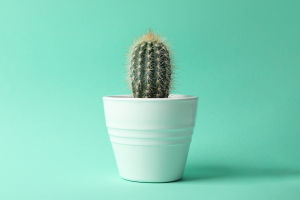Watering plants is a fundamental aspect of gardening and plant care, yet it often confuses even seasoned gardeners. Proper watering techniques can make the difference between a thriving plant and one that struggles to survive.
Lykkers, in this guide we'll explore effective watering methods, tips for different plant types, and the best practices to ensure your plants flourish.
Understanding Your Plants’ Needs
1. Know Your Plant Type
Different plants have different watering requirements. Succulents and cacti prefer dry conditions, while tropical plants thrive in moisture. Familiarize yourself with the specific needs of your plants to determine how often and how much to water them.
2. Assess the Soil Moisture
Before watering, check the moisture level of the soil. Stick your finger about an inch into the soil; if it feels dry, it's time to water. For potted plants, ensure that the bottom of the pot is not waterlogged, as this can lead to root rot.
Best Watering Techniques
1. Water Deeply
When you water your plants, ensure that the water reaches the root zone. Deep watering encourages roots to grow deeper into the soil, making them more resilient to drought. Aim to water until you see moisture draining from the bottom of the pot or the soil is thoroughly saturated.
2. Water Early or Late
The best time to water your plants is early in the morning or late in the afternoon. This practice helps reduce evaporation and allows plants to absorb moisture more effectively. Avoid watering during the hottest part of the day, as the sun can cause the water to evaporate quickly.
7 Tips to Water Your Garden Perfectly 🌻🚿
Video By Epic Gardening
Watering Techniques for Different Plants
1. Indoor Plants
For indoor plants, use a watering can or a self-watering pot. Ensure the pot has drainage holes to prevent overwatering. Rotate your pots occasionally to promote even growth as plants will naturally lean towards the light.
2. Outdoor Plants
For outdoor gardens, consider using soaker hoses or drip irrigation systems. These methods deliver water directly to the soil, reducing water waste and keeping foliage dry, which can help prevent diseases.
3. Newly Planted Seeds or Seedlings
Seeds and seedlings require consistent moisture to germinate and grow. Water gently to avoid displacing the soil, and keep the soil consistently moist until the plants establish their roots.
Signs of Overwatering and Underwatering
1. Signs of Overwatering
Yellowing leaves, wilting despite wet soil, and a foul odor from the soil can indicate overwatering. Adjust your watering schedule accordingly and allow the soil to dry out before watering again.
2. Signs of Underwatering
If the leaves are crispy or browning at the edges, and the soil feels dry and hard, your plant may be underwatered. Increase your watering frequency to ensure your plants receive adequate moisture.
Proper watering is vital for plant health and growth. By understanding your plants' specific needs, employing effective watering techniques, and monitoring for signs of stress, you can ensure that your plants thrive in their environment. With a little care and attention, your garden or indoor plants will flourish, bringing beauty and life to your space


